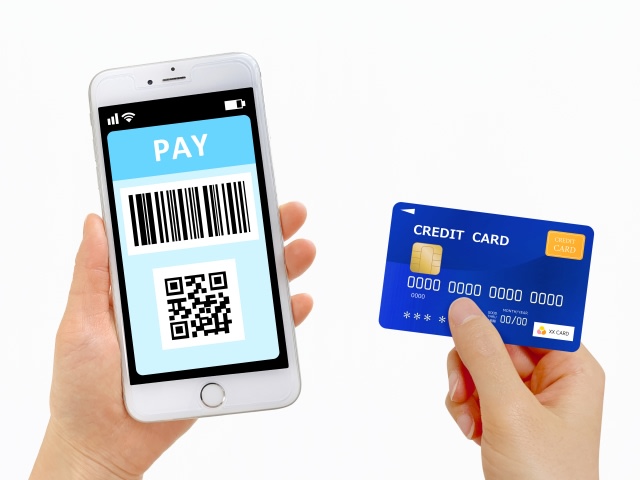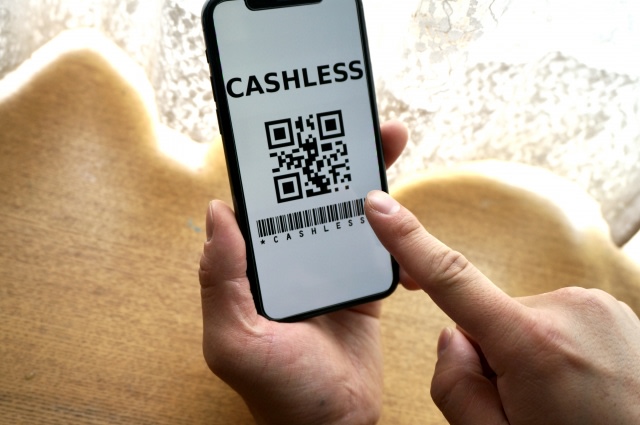Updated August 22, 2024
Cashless Payments in Japan: All Methods, Explained
Slowly but surely, Japan is catching up to the cashless payment revolution.
This transition to cashless transactions brings significant convenience to both residents and visitors. Today, there are multiple ways you can pay digitally in Japan, so let’s explore your cashless payment options.
I’ll tell you what works best and what doesn’t, and even give you tips on how to use the payment services I’ll introduce.
Let’s jump right in.
In this article: 📝
What Payment Method Does Japan Use Today?
As I mentioned, cashless payments took a while to catch on in Japan. Many restaurants and shops, especially smaller businesses and boutiques, still require cash payments.
The turning point came in 2018, when the government took the matter into hand. The same year, the Ministry of Economy, Trade, and Industry established the Cashless Point Rebate Program with the goal of making cashless payments the new norm.
More specifically, the government’s goal was to make 40% of the payments in the country cashless by 2025.
As we get closer to the goal, the effects of both the goal and the rebate program are undeniable. Cashless payment is really catching on. In addition to an increase in credit card use, countless payment apps and pre-paid electronic payment cards, as well as QR-code-based payment services have popped up since then.
The main cashless payment methods we’ll discuss in this post include:
Transit or Travel Cards
Credit Cards
Electronic Cash Cards
QR-Code Based Payment Apps
Smartphone Payment (Apple Pay, Google Pay)
Now, let’s take a deeper look into each option, and see how you can use them.

Transit or Travel Cards: Suica, PASMO, and More
Public transport is a big part of life in Japan, especially if you’re living in one of the larger cities. The train system is one of the best in the world, so nearly everyone has a travel card they use on a daily basis.
This is why transit cards like Suica (issued by the JR East) and PASMO can also be used as cashless payment cards in many convenience stores, big chain restaurants, and even supermarkets.
These two cards are great cashless payment options for your daily needs if you’re living in Tokyo or the Kanto area in general.
In Hokkaido, Kitaca cards issued by the JR Hokkaido company are similar, and many other cities have their own versions, too.
While these cards are great if you’re a resident here, the best part about them is that you can also use them as a traveler.
Suica for Travellers
Suica has options suitable for travelers and residents alike. Not only will you not have to buy tickets every time you want to ride the train, but you’ll also have a cashless payment card with you at all times.
However, the regular physical Suica cards are no longer readily available for sale, due to a global shortage of IC chips. You might be able to purchase a card at select JR service counters around Tokyo, but to save time, you can also add a digital Suica card to your Apple wallet. There’s also a mobile Suica App for Android phones bought in Japan.
If you’re only here for a short period of time, you can get the traveler-friendly “Welcome Suica” card. Make sure to sign up for it at Haneda Airport Terminal 3 or Narita Airport Terminal 3, which are the only spots where the card is issued as of March 2024.
Welcome Suica can be used for 28 days, and you can get a prepaid option for 1,000, 2,000, 3,000, 5,000, and 10,000 yen. If you’re traveling to Japan, you’ll also want to check out the best times to visit.
Credit Cards
Credit cards are by far the most popular option in Japan when it comes to cashless payment.
Using credit cards here is as straightforward as it gets and isn’t much different from any other country. You can use credit cards across Japan at various stores and restaurants.
That said, keep in mind that not every establishment has the latest POS machines or the digital technology required for contactless payment or paying through your credit card by tapping your phone. So, I should note that the term “credit card” is used in the most traditional sense here.
After providing your card or inserting it into the machine, you might be asked to sign the bill or enter your PIN code.
Still, even though they’re pretty much accepted universally at all big chain stores and restaurants, as well as larger boutique establishments in cities like Tokyo, smaller shops may not accept credit cards at all.
This is especially common in smaller cities or in the countryside of Japan (the inaka). So, always having some cash on you is a good idea if you’re residing in these areas or when visiting a small shop in the city.
Because your cards may not be accepted everywhere, going cashless isn’t a good idea in Japan if all you have on you is your foreign credit card.
Electronic Cash Cards
As I discussed in my article on point cards, electronic cash cards are quite common in Japan. Some even help you earn points that you can redeem later on when making purchases or even paying bills.
Electronic cash cards are usually issued by convenience stores, supermarket chains, or large holdings that have multiple businesses under their umbrella. The most common ones include the WAON card issued by the supermarket chain AEON and the Rakuten Card issued by the corporate giant Rakuten.
However, I should note that while these cards may be issued by specific stores, they are usually accepted at many other stores nationwide. So, there’s more to them than initially meets the eye.
As they all have long lists of partnered establishments, having one of these cards can allow you to shop cashless in many stores and restaurants while earning points.
Electronic cash cards come in prepaid form as well, so you can simply buy one with the amount you want to be loaded on the card from the get-go.
Contactless Payment Options: Can I Use Tap To Pay in Japan?
Contactless payment is another convenient cashless payment method. Although most credit cards today offer this option, some establishments don’t have the POS devices that read contactless cards, especially those in smaller towns or rural areas.
When this is the case, other options like Apple Pay or Google Pay won’t be of help either. However, you’ll be glad to know that both these services are quite common and available in the larger cities of Japan, such as Tokyo, Kyoto, or Osaka.
In fact, you can even use your Suica or PASMO cards and the electronic cash cards I mentioned by adding them to your Apple Wallet or Google Pay and paying via your phone.
Smartphone Payment Options
An even more common way to use smartphones to pay for goods and services is, without a doubt, payment apps.
Smartphone payment apps can work like a digital credit/debit card on your phone, and some are QR code-based, allowing you to pay by scanning a QR code with your smartphone’s camera.
However, keep in mind that some of these mobile payment apps may not support smartphones bought overseas.
The most popular payment app options include AliPay, WeChat Pay, and PayPay, but there are many more, so let’s see what they are.
Popular Japan Payment Apps: Which Payment App is Used in Japan?
As I mentioned, there are quite a number of smartphone payment apps out there, some of which are QR-code-based, while others act like a digital credit card on your smartphone. Here are the most popular ones:
PayPay
Rakuten Pay
dPay
MerPay
AU Pay
LINE Pay
Bonus Recommendations
Let’s take a closer look at each one.
PayPay
Whether you’re a resident in Japan or a traveler passing by, PayPay is one of the best smartphone payment options you can use in Japan. In fact, it’s so widespread that you’ll see it at smaller, boutique places as well.
PayPay uses QR-code technology, making it hassle-free, and has multiple international partners in Asia, such as AliPay from China and Kakao Pay from South Korea. If you’re coming from these countries and already using one of these services, you can use PayPay with the same account.
What’s more, paying with PayPay earns you points, too! You can earn one yen for every 200 yen you spend. In addition to payments, you can also send money to other users using your smartphone.
PayPay is also on Japan Dev’s company list with open positions.
Rakuten Pay
Offered by Rakuten, Rakuten Pay is another QR-code-based payment system that’s commonly used in Japan.
The big thing about Rakuten Pay is the points you get. While most point cards offer half the points for your QR code payments, Rakuten Pay offers you the full 1% rate in return for your spending.
By far the best way to use Rakuten Pay is by connecting it with a Rakuten Card. This will get you 1.5 times more points. Given Rakuten’s popularity and how widely accepted the card is, Rakuten Pay is worth considering whether you’re a resident or a traveler.
dPay
dPay is the mobile payment service of Docomo NTT, a popular telecommunication company from Japan. This is among the top three most popular payment apps here, as over 4.1 million stores accept dPay across the country.
In addition to being a payment service, dPay also offers a point rewards service, so you can collect points while making payments.
Collecting points is easy with dPay – all you need to do is use it together with a dPoint Card. This way, you can collect points from your purchases at the popular Konbini and supermarkets such as Lawson and Family Mart, as well as Matsumoto Kiyoshi stores.

MerPay
MerPay is Mercari’s payment platform, which is Japan’s first unicorn startup company and the owner of the country’s biggest second-hand marketplace platform.
If you’re a common user of the popular platform Mercari, you can use your sales funds from your Mercari account to pay for things directly through MerPay, making this a convenient option. What’s more, if you already have a Mercari account, setting up MerPay is extra simple.
MerPay may not offer points based on your spending, but you do get coupons and special discounts at partner stores.
Last but not least, another convenience of using MerPay comes from the company’s partnership with dPay. This lets you pay via MerPay at any store that accepts dPay, greatly extending the use of the app.
au Pay
au Pay may not be as commonly used as PayPay, but it’s still accepted at a wide range of stores across Japan in over a whopping 5.28 million locations.
Like many other services here, au Pay is also QR-code-based, so it’s just as easy to use.
If you’re going with this option, we recommend using the au Pay Card, which functions like a credit card and also gets you points from Ponta-affiliated stores. The Ponta point cards can even earn double points at large chain stores such as Lawson and KFC.
If you have questions about credit cards in Japan and don’t know which one to pick, my guide to credit cards in Japan can help you with that. I explained the best credit card options for all types of use cases, so be sure to check it out.
LINE Pay
Unfortunately, LY Corporation has made the decision to discontinue LINE Pay for users in Japan by April 30, 2025.
If you already have a LINE Pay account, you’ll be able to transfer your payments to PayPay upon request, although the details of this process will be announced early 2025.
Bonus Recommendations:
AliPay
Another QR code-based app, AliPay is a phenomenon all throughout China. In a similar fashion, you’ll also see that it’s widely accepted all over bigger cities in Japan.
Many department stores, convenience stores (konbini), electronics stores, and even the 100-yen shops that sell everything accept this method of payment. So, if you’re coming from China and are already an AliPay user, you’ll have no problem in Japan when paying for stuff for the most part.
However, AliPay doesn’t give you points in return for your spending. So, you may be at a slight disadvantage if you plan on using smartphone payments often.
We mainly recommend this option for someone who is already using AliPay and is travelling to bigger cities Japan. AliPay gives you the option to use your credit card from your home country, which is a tempting convenience.
WeChat Pay
WeChat is another mega app from China, and its payment service, WeChat Pay, is also widely accepted in Japan. Like the others I introduced so far, WeChat Pay also works by scanning QR codes and can be used by both residents and visitors.
To use WeChat Pay, just link your existing credit card to it.
That said, similar to its fellow Chinese app AliPay, this one also doesn’t get you points, which is a big thing in Japan, as I talked about in my post about point cards in Japan. However, you might still get special coupons, depending on the store.
We also mainly recommend this option for someone who is travelling to Japan, or is already accustomed to using WeChat Pay in their home country.
Lastly, another benefit of WeChat Pay is that it allows you to send money. So it could be useful for splitting bills among friend groups when traveling around Japan and eating out.
FamiPay
Last but not least, we have another cashless payment service, which is a bit more niche but is surely neat. FamiPay is a QR-code-based payment service exclusive to Family Mart stores that’s very easy to set up after downloading the app.
If your go-to store preference is Family Mart, this is definitely worth signing up for as you’ll receive points for your purchases at the stores, which you can use for future purchases.
Keep in mind, however, that you need to recharge this card at the cash register if you don’t have a Japanese bank account. I have a detailed guide to banking in Japan that guides you through the entire process of opening one, so check it out if you’re interested in doing that.
Recharging your FamiPay card via credit card is possible too, but it’s only available for Family Mart T Card and JCB brand credit cards.
Closing Thoughts on Japan Payment Apps
As we conclude our guide to going cashless in Japan, you may have noticed that quite a few of the cashless payment options we’ve explored were mobile apps that use QR codes.
While Japan may be still catching up in terms of normalizing and spreading the use of cashless payments, it seems to have caught up in terms of convenience. QR payments are a handy approach to digital payments, and most even earn you points, getting literally more bang for your buck.
In fact, though I introduced eight great payment apps in this post, I still haven’t covered all of them. You’ll find many more out there that may be more commonly used by your social circle or where you live.
While this is it for cashless payments in Japan, if you want to learn how to manage your money better, my guide on accounting in Japan may be of help.
Get Job Alerts
Sign up for our newsletter to get hand-picked tech jobs in Japan – straight to your inbox.







